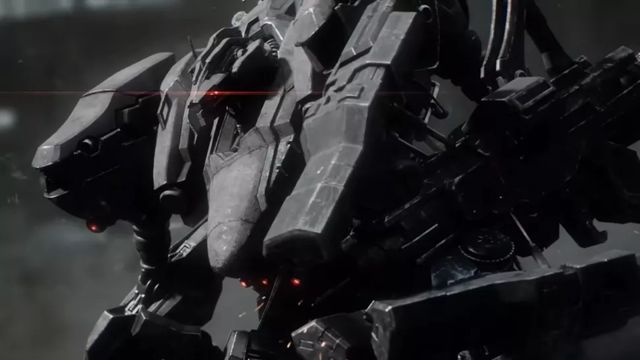From Software once experimented elsewhere with “Armored Core,” but turned the tables with the success of “Elden Ring”
Software’s best games of the past 30 or so years are split in their picture. On the one hand are games that put a fantastical twist on historical eras, where the forces of light and darkness are constantly at odds and threaten the survival of humanity. From Kingsfield to Tenchu, Gogi, Dark Souls, and, of course, Eldenring, distinctive themes of honor, valor, revenge, corruption, cursed lands, and sacred intrigue run through every title. Armored Core, on the other hand, is a futuristic sci-fi series of giant mechs clashing with each other.
Well, that’s an oversimplification: even the original “Armored Core,” released in Japan and the US in 1997 and in Europe on PSOne in the summer of 1998, had an impressive set of customizations and dealt with fairly advanced themes about industrialization and corporate governance. But at its core (or should I say armored core?), it was about big meaty robots shooting laser cannons and chain guns in tight spaces. And it absolutely shined in local multiplayer.
Basically, the series had a wide audience and was the driving force behind From Software until 2006, when “Armored Core 4” was released on PS3 and Xbox 360. Since then, one could say that things have changed, which makes Armored Core 6: Fires of Rubicon, announced at The Game Awards 2022, all the more intriguing. I mean, what kind of game is “Armored Core” in 2023?
Role reversal

Since the release of Armored Core 4 16 years ago, the only titles in the series have been Armored Core 5, released in 2012, and the standalone expansion Armored Core the following year. 2012 saw the release of Armored Core 5, and the following year the expansion Armored Core: Verdict Day” was released. In the meantime, From Software released “Demon’s Souls” in 2009, “Dark Souls” in 2011 (and “Prepare to Die Edition” in 2012), “Dark Souls 2” in 2014 (and “Scholar of the First Sin Edition”), “Bloodborne” in 2015, “Dark Souls 3” in 2016, “Dark Souls Remastered” in 2018, “Sekiro: Shadows Die Twice” in 2019, and “Elden Ring” earlier this year, all of which are third-person action RPGs with similar mechanics, themes, combat, light-touch storytelling, and progression systems.
Due in part to George R. R. Martin’s commitment to the project, FromSoftware’s position has risen dramatically over the past decade with the steady growth of the “Soulsborne” series, culminating in the huge success of “The Eldenring. “In 2022, we will be able to see FromSoftware’s had a clear understanding of what a game was supposed to look like. Not that robots would appear. It seems ironic indeed that the Armored Core series, once From Software’s most recognizable and biggest earning export, is being resurrected in the shadow of the success of Elden Ring. In the past, the publicity and revenue from “Armored Core” allowed the developer to take on riskier, more esoteric ventures like “Chromehounds” and “Enchanted Arms” in between. But now the driving force is “Elden Ring,” a game that grew out of one of the studio’s biggest risks ever, “Demon’s Souls.
Future heads

This is a pretty cool journey. I was 11 years old when I played the original “Armored Core” as soon as it was released, so I remember a lot of the early buzz around the series. But talking to the younger staff at GamesRadar+ – those of us who have grown up with the rise of “Soulborn” over the past 13 years – I think it’s fair to say that “Armored Core” is now a relic of the past.
Therefore, making “Armored Core” compatible with the current generation is certainly a top priority for FromSoftware. Furthermore, Elden Ring’s expansive Lands Between sandbox sets a new standard for open-world exploration. It is exciting to see the potential for Armored Core games to take advantage of more expansive playgrounds. Local or online multiplayer has been one of Armored Core’s biggest selling points from the beginning. Still, while early games were praised for their pick-up-and-play design, later games were criticized for being sterile, punishing, and overly complex. On the other hand, Elden Ring’s biggest selling point was how it streamlined the Dark Souls formula and how broad and accessible it was for new players, which to me, is the key to Armored Core 6: Fires of Rubicon’s success.
Rumors of a return to the Armored Core series have been around for some time, and with the latest installment due out next year, it is worth noting that it is clearly in development. However, we are entering a new world, one that has been completely changed by the developer’s previous work. With a different clientele of fantasy action role-players and mech-fighting enthusiasts, From Software, which made a name for itself among gamers with “The Elden Ring,” is no doubt under new expectations and pressure from a wide range of young and mature audiences.